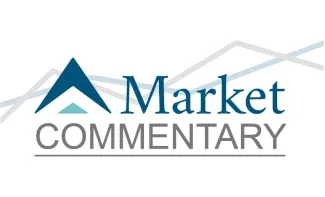
Summer 2022 Market Commentary
By Marc Usem and the Affiance Financial Investment Committee
This year has been characterized by an extensive list of “records” — and not in a good way. These records include: the highest inflation since 1981, the worst first half of the year for stocks since 1970, the worst first half of the year on record for bonds, the fastest rising mortgage rates in 50 years, and the biggest single increase to the Fed Funds rate (0.75%) since 1994.
Year-to-date numbers reflect the record weak first-half returns, with the S&P 500 down 20% and bonds down 10%. This was broken up between quarters — the S&P fell by 16% in the second quarter with bonds down 4.5%, on the back of stocks sliding by 4.6% in the first quarter and bonds dropping by 5.9%. Historically, bonds have offered protection when stocks are weak, but this year has been an anomaly due to rising interest rates. We have warned clients to expect volatility to be higher this year, but our forecast has been more accurate than desired. A 20% decline is defined as a bear market for stocks, and while there is no specific decline similarly defined for bonds, we all know it’s a bear market in bonds too.
In a recent email, we highlighted inflation as the major culprit weighing on markets. Inflation hurts consumers’ purchasing power and reduces overall demand for goods and services. The Fed’s dual mandates are full employment and stable prices (low inflation). With a tight employment market, little stands in the way of the Fed continuing to raise interest rates to cool the economy and reduce inflation. Success is important because inflation can be insidious, causing wage-price spirals that are difficult to break. We have already started to see the housing market react with slowing sales due to higher mortgage rates. We expect the Fed to be successful, which may entail enduring another recession in 2022 or 2023.
While markets are suffering a period of weakness, we know that long-term stock- and bond-market investors get paid to be patient. Moreover, the cost of higher expected returns for stocks is accepting the higher volatility associated with stock investments. If it were always a smooth ride, there would be no equity premium and stock returns would be much lower. Keeping history in perspective remains paramount. Markets have gone through many difficult periods throughout time. The good news is that declines set the stage for subsequent market rebounds. Removing the froth of cryptocurrency, meme stocks, and extensive overvaluation refocuses investors on company fundamentals and the real value of generating cash flow from operations. Market corrections also reset the bar for healthy future growth by weeding out unsound companies held afloat only by low or no-interest financing.
The bad news is that it may get worse before it gets better. It takes time for rate hikes to reduce demand, and the impact tends to overshoot on the downside just as it did on the upside. The good news is we do not expect to see a drawn-out period of inflation similar to the 1970s and early 1980s. Our economy is much stronger and our global position is much better. We are energy independent and actually export oil and gas. This is a far cry from our helpless situation during the 1970s oil embargo. Labor markets are much more dynamic, with 60% of adult women working today compared to 43% in 1970. Our economy is more nimble, with manufacturing making up only 11% of GDP in 2022 versus 24% in 1970. Service businesses (technology) are easier to scale up and down given lower fixed overhead. A strong dollar has helped make imports relatively cheaper, the opposite of the 1970s when the end of the gold standard, as well as wage and price controls, left the dollar reeling lower. In short, we may be able to bounce back more easily from a recession today than in the past.
We remain optimistic that market weakness provides buying/rebalancing opportunities and the portfolio changes we have made during the year have positioned us well for current market conditions. Markets will find equilibrium in time and we will continue to remain focused on those things we can anticipate and control: maintaining asset allocation in-line with risk tolerance and risk capacity, keeping cash as needed for planned withdrawals, taking advantage of estate planning and tax planning opportunities, stress testing financial plans, and remaining disciplined. Staying with your financial plan will continue to lead to the best financial results. Thank you for your continued confidence in our work.
Sources: stlouisfed.org, npr.org, barrons.com, wsj.com, ycharts.com, prb.org/resources/record-number-of-women-in-the-u-s-labor-force, fred.stlouisfed.org/series/VAPGDPMA, uschamberfoundation.org/blog/post/manufacturing-s-declining-share-gdp-global-phenomenon-and-it-s-something-celebrate/34261
The views represented in this commentary are not meant to be construed as advice, testimonial or condemnation of any specific sector or holding. Investors cannot invest directly in an index. Unmanaged indexes do not reflect management fees and transaction costs that are associated with some investments. Past performance is no guarantee of future results. To discuss any matters in more detail, please contact your financial advisor.

